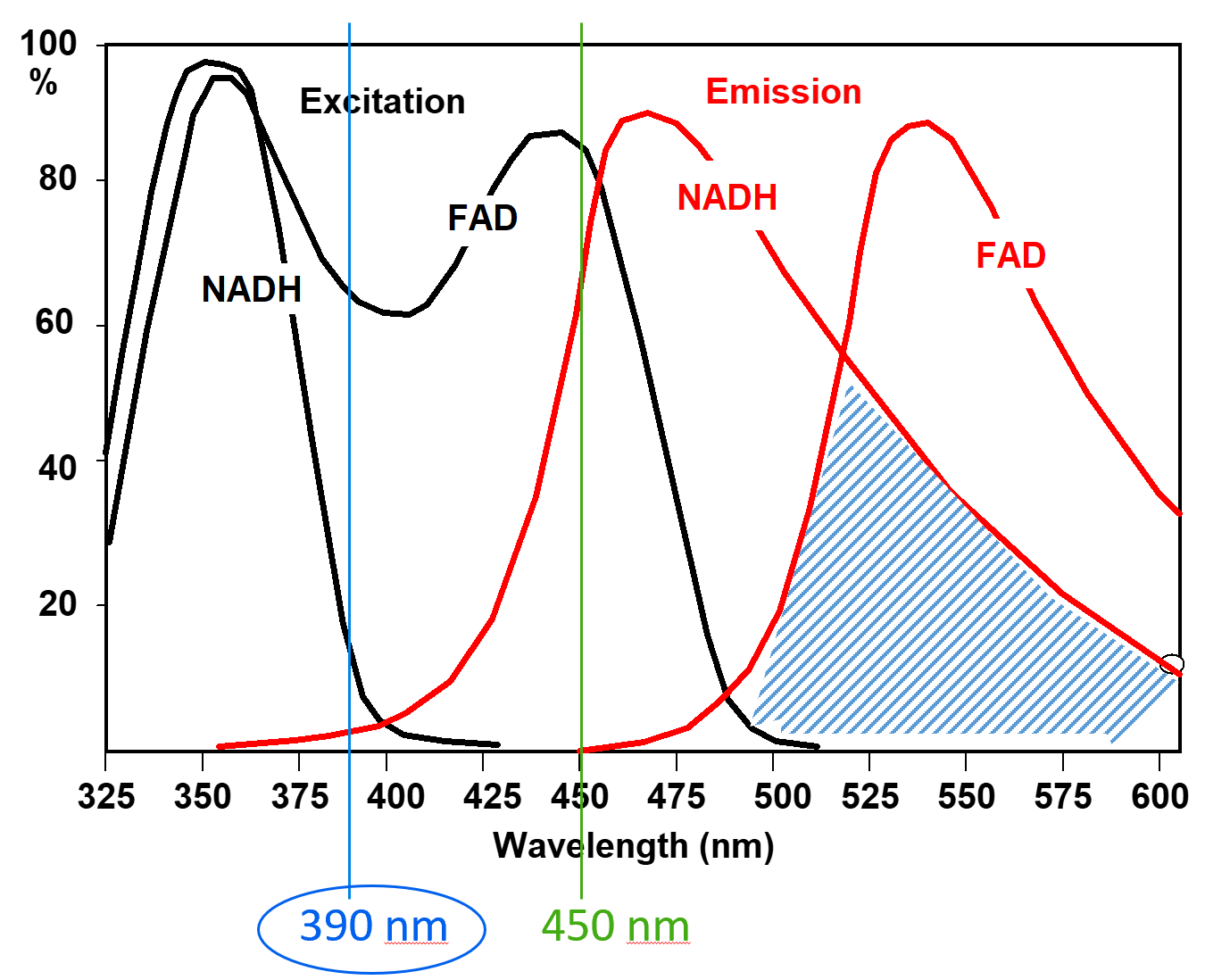NADH and FAD absorption spectra do overlap. Thus, in principle, you can excite both molecules at the same time e.g. at 395 nm (or at 790 nm with multi-photon exc.), i.e. there is no problem on excitation site. But there is a problem with the separation of the two emissions when both occur at the same time. Please have a look at the following figure:

Now, have in mind, the NADH signal is usually much stronger than the FAD signal. When you do excite NADH/FAD simultaneously, the ‘problem’ occurs in the blue shaded marked area. There is the strong overlap of the two emission spectra. The NADH emission strength in your typically selected ‘FAD-channel’ (e.g. 540+/-20 nm) is now usually many times higher than your actual FAD emission strength. So in reality when both molecules are excited at the same time, this is not an FAD channel – it is more a second NADH channel.
As a consequence, you need to multiplex excitation if you want to use the FAD signal in addition to the NADH signal.
